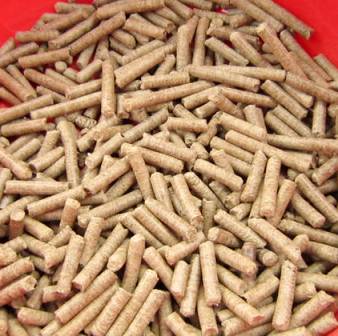( Update: 08/11/2018 )

After more than 10 years of research, scientists at the Institute of Agricultural Engineering and Post Harvest Technology (CDNN & CNSTH) has completed initial electrical production technology from discarded agricultural byproducts.
Now we no longer have the burning sawdust that could be better used. With the successful study of this technology, the future seemed to waste away (rice hulls, corn cobs, bagasse ...) will be able to produce a relatively large amount of power to the people .
Waste can produce electricity ...
Currently, the waste products of agriculture in our country mainly include rice hulls, corn cobs, bagasse, sawdust, coconut shell ... with a total output of up to millions of tons (if concentrated). Prof. Dr. Pham Van Lang - former Director of the Institute CDNN & CNSTH, chaired the research, said: "Compared with the large resource extraction from hydro power, thermal power, source power from agricultural waste but many do not. But if the advantage of this waste stream will just help reduce environmental pollution, the medium can provide on-site power for rural areas, especially in areas far away ... ".
Private rice husk can be collected in the Mekong Delta up to 1.4 to 1.6 million tons. Prof. Dr.. Pham Van Lang calculations, the total output of waste biomass every year in our country can reach 8-11 million tons. Compared with the production of electricity from coal, the production technology is cheaper and saves a lot more, because if used 2-4 kg of waste biomass would be equivalent to 1 kg of coal Verde (1,000 VND / kg), whereas only 5-10% price rice husk charcoal prices.
In addition to the Mekong Delta, other areas such as Highlands can also waste biomass to reach 0.3-0.5 million tons of coffee. But Northwest also bring to 55000-60000 tons of sawdust from wood exploitation and processing. Especially waste from the sugar cane factory, now the country is 10-15% of bagasse is used not just pollute the environment, has not been utilized. According to GS. TS. Pham Van Lang, any forms of waste can fuel to produce electricity, the problem is that people must be aware of the saving and collection of such waste.
Sawdust, rice husks into electricity ... how?
After many experiments, the current CDNN & CNSTH Institute has built a line of FBC-CHP technology in food processing factory No. 2 (Food Corporation of Long An). This is a fairly modern lines with six main parts including: boilers and incinerators, steam turbine, generator, heat exchanger, fluidized bed dryers, dryer low. Working principle of the line was conducted through the following steps. Clean water from the water supply system is put in the water treatment, and then flows into the tank. From here, the system will pump water boiler of fluidized bed combustion systems.
Fuel is provided by a boiler feed unit. Fluidized bed combustion as a heat generating steam supply pressure, the water flow reaches 2.500kg/gio and drag spinning turbine generators emit voltage supply for power plants or dryer . This voltage gain 220/380V, 50kw capacity can be achieved. Not only is the production of electricity, this line is also used for drying agricultural products with a capacity of about 8 tons / hour for heat generated in this process is very large.
Although electricity production costs from higher technology hydropower (about 1.500USD/MW all costs, but according to the scientists, the price is still cheaper on a lot compared to the raw materials of quartz (10-30%). Prof. Dr.. Pham Van Lang said: "To date, the Institute has built 7 oven and heat in the southern province of Long An, Kien Giang, HCMC. HCMC, Gia Lai. .. However, this technology is still in the research process, if you want to expand to need the help of the State and enterprises can build the lines. "
To produce electricity 1kWh this material, need about 3-4kg of waste biomass. Thus, each year the country also can produce 3.8 to 4 million kWh of electricity and heat generation capability can also reach 11-12 million KWT.